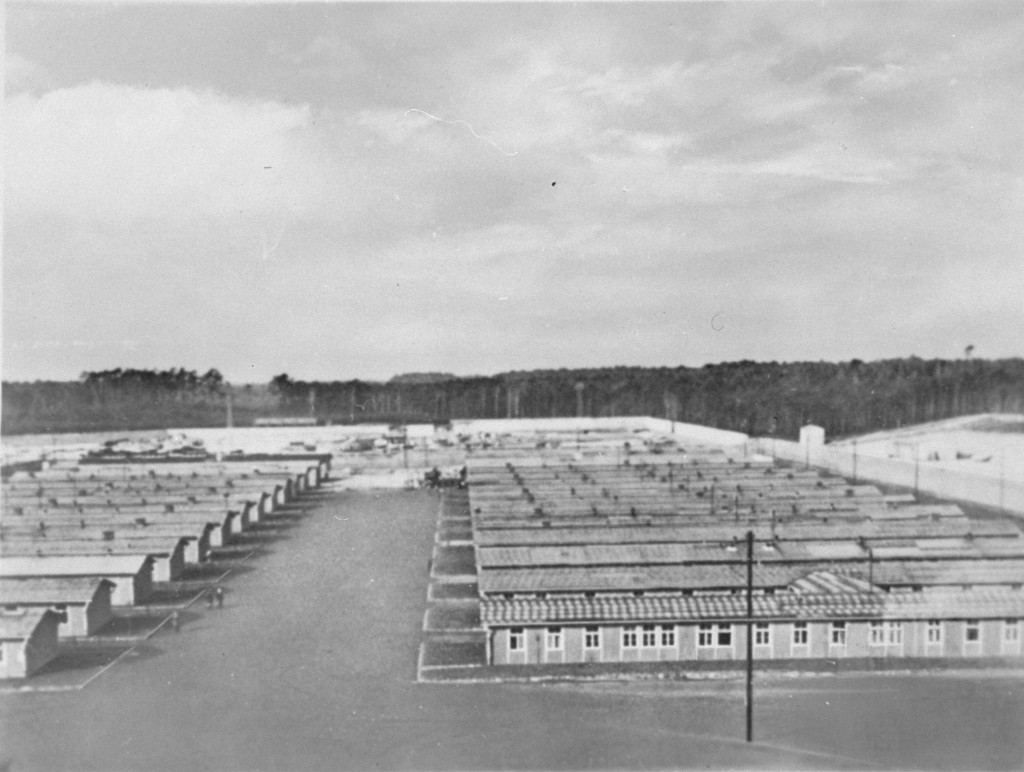
Corrie ten Boom
During World War II, Protestant watchmaker Corrie ten Boom helped rescue Jews in the German-occupied Netherlands. In February 1944, she was arrested and imprisoned in the Scheveningen prison. Ten Boom was later sent to the Herzogenbusch-Vught and Ravensbrück concentration camps.
Key Facts
-
1
During World War II, Corrie ten Boom belonged to a resistance network based in Haarlem, the Netherlands.
-
2
Ten Boom and her family are credited with helping to rescue hundreds of Jews.
-
3
Corrie ten Boom’s memoir The Hiding Place recounts how her Christian religious beliefs motivated her to help Jews during the Holocaust.
The responses of non-Jewish individuals to the Holocaust varied and depended on many factors. Most individuals were reluctant to help Jews because of fear, self-interest, greed, antisemitism, and political and ideological beliefs. Others chose to help because of religious or moral conviction, or based on the strength of personal relationships. This article is about Corrie ten Boom, whose religious convictions motivated her to help rescue Jews.
Cornelia “Corrie” ten Boom (1892–1983) was born into a devoutly religious Protestant family on April 15, 1892, in Amsterdam, the Netherlands. She grew up in the Dutch city of Haarlem, where her family owned a watch shop. Prior to World War II, ten Boom was one of the very few licensed female watchmakers in the Netherlands. She and her family devoted time and resources to numerous charitable activities.
Ten Boom became a rescuer during the Holocaust. She helped hide Jews from arrest and deportation during the German occupation of the Netherlands. Ten Boom’s deeply held religious beliefs motivated her to resist Nazi persecution. She worked closely with the Dutch resistance. Her defiance led to arrest, imprisonment, and internment in two concentration camps. Several family members died from maltreatment while in German custody. The ten Boom family is credited with helping to save hundreds of Jews. On December 12, 1967, Yad Vashem recognized her as “Righteous Among the Nations.”
Religious Background and Motivation
Corrie ten Boom and her family were devoutly religious. They were members of the Dutch Reformed Church. In her writings and speeches, ten Boom often cited religious motivations for hiding Jews.
Their religious activities had also brought the family a history of personal connections to the Jewish community. Corrie’s grandfather had supported efforts to improve Christian-Jewish relations in the nineteenth century. Her brother Willem, a Dutch Reformed minister assigned to convert Jews, studied antisemitism. He ran a nursing home in the Dutch town of Hilversum for elderly people of all faiths. In the late 1930s, Willem’s nursing home served as a refuge for Jews fleeing from Nazi Germany.
Resistance and Rescue Activities During World War II
World War II began in September 1939, when Nazi Germany invaded Poland. In May 1940, Nazi Germany invaded the Netherlands.
During the war, members of the ten Boom family became involved in resistance and rescue efforts. Corrie’s brother Willem and his son Christiaan “Kik” ten Boom, worked in the resistance. Despite the risks, they helped Jews contact persons willing to hide them. Corrie became directly involved in rescue and resistance efforts. The watch shop and home on Barteljorisstraat where she lived with her father Casper and sister Betsie became a meeting point for resistance members in the center of Haarlem. Using her job as a watchmaker in her father’s shop as cover, Corrie built contacts with resistance workers. She made contacts who procured ration books for Jewish people to use in hiding. The resistance built a hiding place in the ten Boom family home.
In 1943, Corrie, Casper, and Betsie decided to take on the additional risk of hiding Jews full time in the family home. They took in people who could not find other hiding places because of their appearance, illness, or for other reasons.
Arrest and Imprisonment
In early 1944, the ten Boom family was denounced. The authorities raided their home on February 28, 1944. Six people, among them Jews and members of the Dutch resistance, concealed themselves in the hiding place during the raid. Those in hiding remained undiscovered. Several days after the raid, members of the resistance transferred them to other locations.
In the meantime, the Gestapo had arrested the fifty-one-year-old Corrie ten Boom, her father, her brother Willem and her two sisters, and her nephew Peter van Woerden. The authorities also arrested several resistance workers who had unwittingly entered the house during the raid, as well as many family acquaintances who had been there attending a prayer meeting. Altogether, some 30 people in the ten Boom family home were arrested that day.
The arrested members of the ten Boom family were imprisoned in the Scheveningen prison, also known as the Oranjehotel. The Gestapo soon released all but three of the ten Boom family members. Corrie, her older sister Betsie, and their father Casper remained imprisoned. Casper, then 84 years old, became sick while in prison. He died in a hospital corridor only ten days after his arrest. Corrie and Betsie remained in the Scheveningen prison until June 1944. At that time, officials transferred them to the Herzogenbusch-Vught concentration camp in the Netherlands. In September 1944, authorities deported Corrie and Betsie to the Ravensbrück concentration camp in Germany. The sisters managed to stay together until Betsie died in December. While in the camp, Corrie secretly brought together other non-Jewish prisoners to pray.
The camp administration released Corrie ten Boom in late December 1944. Along with other released prisoners, she traveled by train to Berlin. She arrived there on January 1, 1945. From Berlin, ten Boom journeyed across Germany by train. She eventually reached the Netherlands, where she reunited with surviving members of her family.
After World War II
After the war, Corrie ten Boom helped administer a home for people who had also survived concentration camps. Inspired by her late sister Betsie, she engaged in rehabilitation work with Dutch collaborators and in dialogue with German perpetrators. Ten Boom wrote about her wartime experiences in the book A Prisoner and Yet… (originally published in Dutch in 1945).
In the following decades, ten Boom traveled the world as an evangelist, motivational speaker, and social critic. During her talks, she often referred to her experiences in Ravensbrück. Her story became particularly well-known among American evangelicals. In 1971, her memoir The Hiding Place was published with a preface written by American evangelist Billy Graham. In 1975, The Hiding Place was made into a movie produced by World Wide Pictures (a subsidiary of the Billy Graham Evangelistic Association).
Postwar Recognition of the ten Boom Family
In 1967, Corrie ten Boom was honored by Yad Vashem as “Righteous Among the Nations.” In 2007, Yad Vashem also honored her father, Casper, and her sister Betsie.
The ten Boom house on Barteljorisstraat in Haarlem, Netherlands, is now a museum called the Corrie ten Boom House (Corrie ten Boomhuis).
Critical Thinking Questions
What pressures and motivations may have influenced the decisions of ten Boom?
Are these factors unique to this history or universal?
How can societies, communities, and individuals reinforce and strengthen the willingness to stand up for others?

